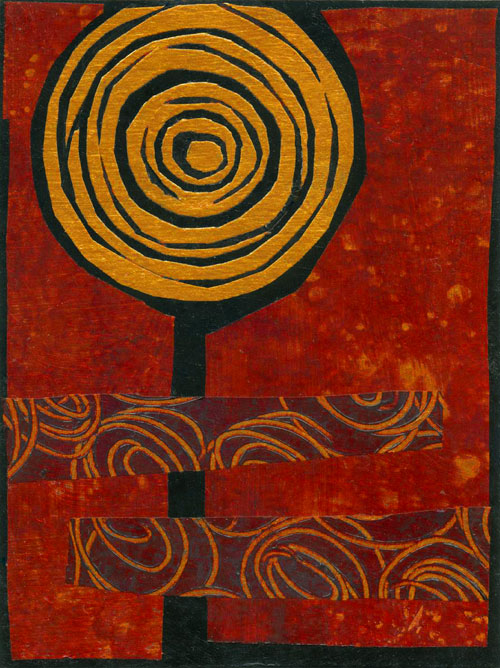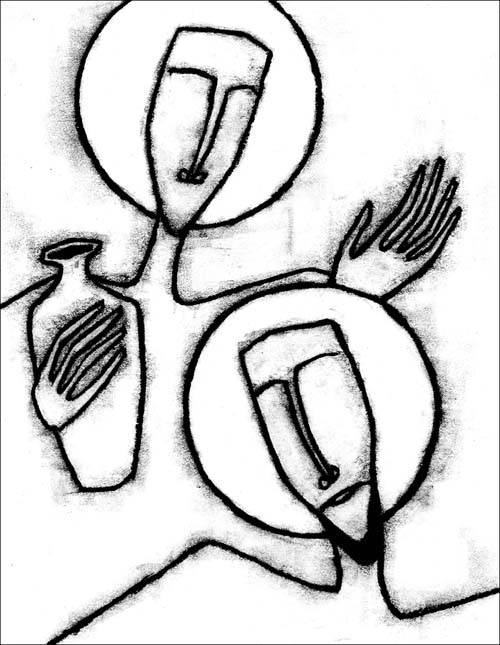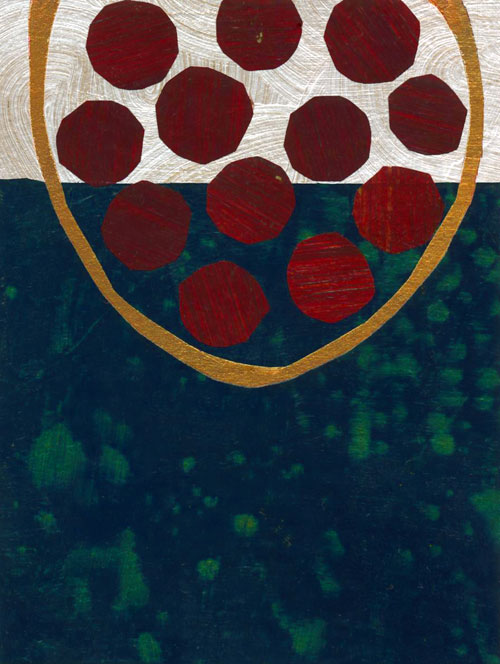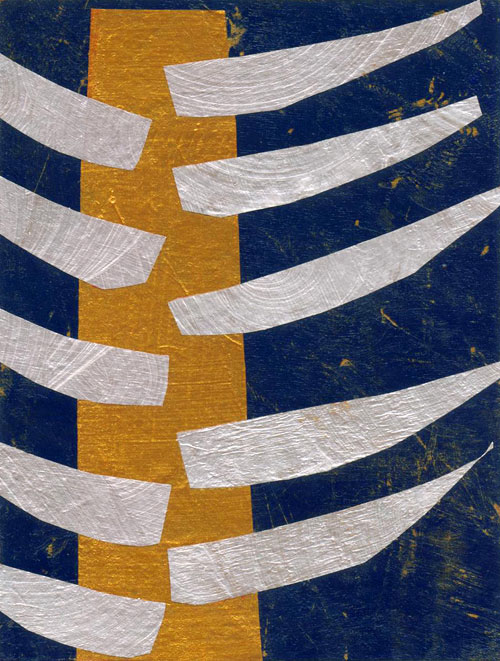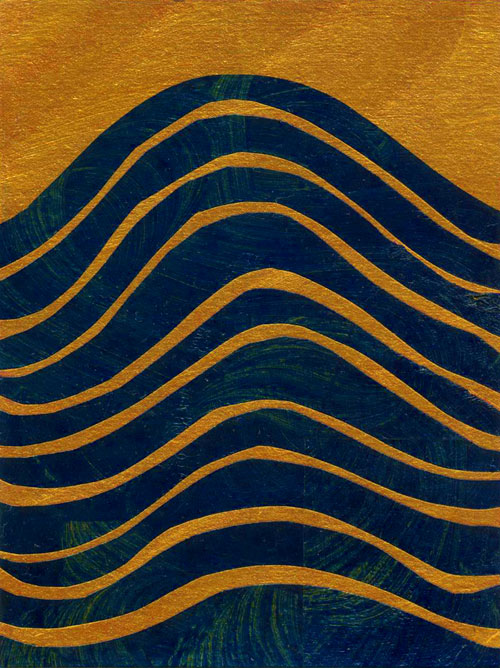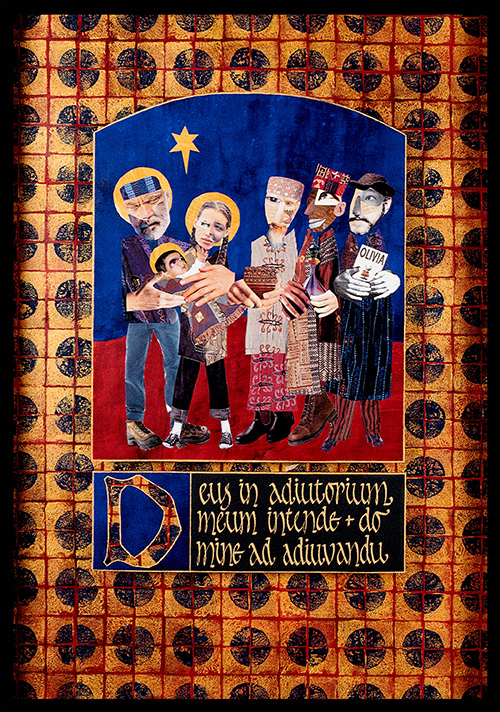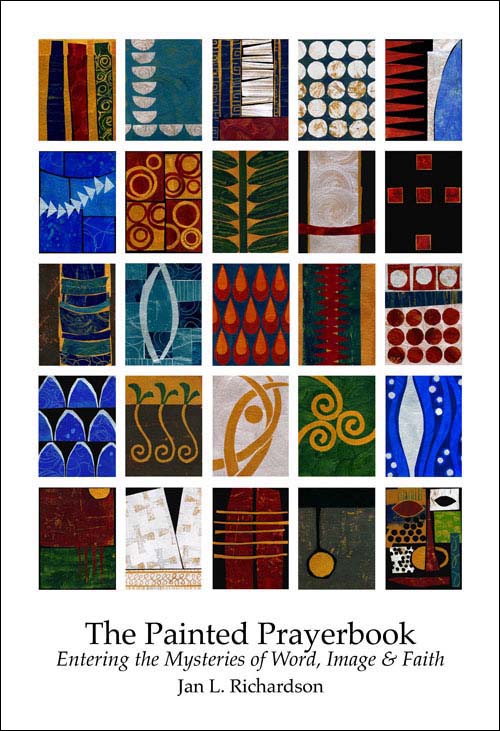
Saint Brigid © Jan L. Richardson
Tomorrow brings one of my favorite days of celebration: the Feast of Saint Brigid of Kildare, beloved holy woman of Ireland. Born in the middle of the fifth century, Brigid became a pivotal figure in the development of Irish Christianity. We know few concrete details of her life, but the surviving stories offer a compelling depiction of a woman renowned for her hospitality and for the monasteries she established, the most famous being the one at Cill Dara (Kildare), the Church of the Oak.
Many of the tales of Brigid’s life read much like those of other female saints: her saintly qualities were evident from an early age; she forsook marriage in order to follow Christ in a monastic way of life (she even caused her eye to burst in order to avoid being married off; don’t try this at home!); she was a wonder-worker who brought healing and justice; she exercised miraculous influence over the weather, animals, and the landscape. “She stilled the rain and wind,” the final line of the Bethu Brigte, a medieval account of Brigid’s life, tells us.
In her charming book St. Brigid of Ireland, Alice Curtayne describes Brigid as someone who found the poor “irresistible” and ministered to them with “a habit of the wildest bounty.” Her lavish generosity sometimes put her at odds with her family and, later, her monastic community, which occasionally had to do without as she gave their bounty to guests and strangers.
There is a strong domestic quality that pervades Brigid’s wonderworking, a homeliness to the miraculous that runs throughout her tales. Most of her recorded miracles are feats of provisioning by which she secures an abundance of fare for daily sustenance as well as for festive occasions. In Brigid’s presence, butter is replenished; the bacon she slips to a dog miraculously reappears in the pot; a stone turns to salt; water becomes milk, or beer, or, in one instance, an aphrodisiac. Her plenitude consciously echoes Christ’s miracles of provisioning—water into wine, a few loaves and fish into a feast—and embodies the abundant generosity of God. There is a gracefulness that shimmers in the utterly mundane quality of the material of Brigid’s miracles, underscoring the dignity of the daily tasks to which the women of her day—and women across centuries—devoted so much of their lives.
Those who wrote Brigid’s Lives, however, were keen to portray her as much more than a wonderworking dairymaid. Within the workaday landscape of her legends, signs of the mystery and power of God flicker and flash with a brilliance that illuminates the saint and sparks the imagination. Fire is a persistent symbol in her stories, and in one of the earliest prayers to Brigid, known as “Ultán’s Hymn,” the writer addresses her as a “golden radiant flame.”
The symbol of fire illuminates and underscores Brigid’s role as not only a worker of domestic miracles but also a woman of transcendent power. In her stories she appears as a charismatic leader who wields influence in monastic, civic, and natural realms; she is ever at ease among kings and bishops; she brings healing to body and soul; she displays gifts of exhortation; she has prophetic dreams and sees far into the hidden reaches of the heart. Brigid possesses a sense of justice that prompts her to secure the freedom of prisoners and slaves.
The Annals of Ulster variously give the date of Brigid’s death as 524, 526, and 528. According to one of her early biographers, Brigid was buried in the abbey church she established at Kildare, and she continued to work miracles after her death. Tradition tells that she was moved from Kildare and laid to rest in Dunpatrick alongside two other great saints of Ireland, Patrick and Columba. Her physical grave remains a mystery, but the landscape of Ireland continues to testify to her presence, with forms of the name Brigid appearing in the names of towns, holy wells, and churches. Legends, prayers, rituals, and celebrations (some of which echo the festivities of Imbolc, a major springtime celebration in the ancient Celtic year) continue to expand and sometimes complicate her story, adding their threads to the mysterious tapestry of Brigid’s legacy.
Brigid lent her name to a modern-day monastery that has been a significant part of my own journey for nearly a decade. Founded at the turn of this millennium by Mary Stamps, a remarkable woman who possesses a wondrous share of the spirit of the groundbreaking Irish saint, St. Brigid of Kildare Monastery draws from both Methodist and Benedictine traditions. For more information about this unique community, visit Saint Brigid of Kildare Monastery.
A blessed Feast of Saint Brigid to you, and may you possess Brigid’s habit of the wildest bounty!
[To use this image, please visit this page at janrichardsonimages.com. Your use of janrichardsonimages.com helps make the ministry of The Painted Prayerbook possible. Thank you!]
